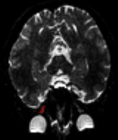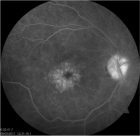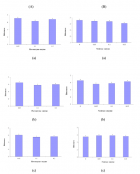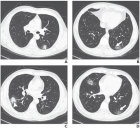Abstract
Review Article
Assessment and sensitive analysis of biological water risks in water resources with application of classical mass transfer computations
Mohammad Gheibi*, Farhad Mahmoudi Jalali, Reza Aghlmand, Amir Takhtravan and Zahra Kian
Published: 09 June, 2021 | Volume 5 - Issue 1 | Pages: 015-024
Due to the urgent need for water in all parts of industrial or developing societies, water supply, and transmission facilities are suitable targets for biological risks. Given that even a short interruption in water supply and water supply operations has a great impact on daily activities in the community, the deliberate contamination of urban water resources has irreparable consequences in the field of public health, and the economy of society will follow. Unfortunately, most officials in the public health control departments in our country have received limited training in detecting accidental or intentional contamination of water resources and dealing with the spread of waterborne diseases both naturally and intentionally. For this reason, there is low preparedness in the responsible agencies to deal with waterborne diseases during biological risks. In the first step of this research, a review study has been conducted on water biological risks and operational strategies to deal with them. In the following, it has studied how Escherichia coli (E. coli) bacteria spread in aqueous media. In this regard, the kinetic model of the studied microorganism was analyzed based on the implementation of (Fick Law) in polar coordinates and the combination of (Dirac Distribution) with (Legendre polynomial) distribution. Finally, after studying the factors affecting the microbial pollutant emission coefficient, the effects of all three factors of linear velocity, linear motion time period, and angle of motion on the pollutant emission flux and biofilm diffusion time in the water supply network environment were investigated. Studies have shown that the linear velocity parameter of Escherichia coli with a nonlinear relationship has the greatest effects on the release of microbial contaminants.
Read Full Article HTML DOI: 10.29328/journal.abse.1001013 Cite this Article Read Full Article PDF
Keywords:
Biological risks; Water resources; Escherichia coli; Fick’s law; Microbial penetration
References
- Da Re S, Le Quéré B, Ghigo JM, Beloin C. Tight modulation of Escherichia coli bacterial biofilm formation through controlled expression of adhesion factors. Appl Environ Microbiol. 2007; 73: 3391-3403. PubMed: https://pubmed.ncbi.nlm.nih.gov/17384304/
- Brenner MP, Levitov LS, Budrene EO. Physical mechanisms for chemotactic pattern formation by bacteria. Biophys J. 1998; 74: 1677-1693. PubMed: https://pubmed.ncbi.nlm.nih.gov/9545032/
- Perrin F. Mouvement Brownien d'un ellipsoide (II). Rotation libre et dépolarisation des fluorescences. Translation et diffusion de molécules ellipsoidales. J de Physique et Le Radium. 1936; 7: 1-11.
- Perrin F, Bruhat G, Weil L, Bauer E, Bernamont J, et al. Brownian motion of an ellipsoid. II. Free rotation and depolarisation of fluorescence: translation and diffusion of ellipsoidal molecules. J de Physique et Le Radium. 1936; 7.
- Hrudey SE, Hrudey EJ, Pollard SJ. Risk management for assuring safe drinking water. Environ Int. 2006; 3 2: 948-957. PubMed: https://pubmed.ncbi.nlm.nih.gov/16839605/
- Liu L, Qu Y, Huang J, Weber R. Per-and polyfluoroalkyl substances (PFASs) in Chinese drinking water: risk assessment and geographical distribution. Environ Sci Eur. 2021; 33.
- Almeida MD, Carriço N, Santos J, Eslamian S. Risk Analysis of Water Harvesting Systems. In: Handbook of Water Harvesting and Conservation: Basic Concepts Fundament. 2021: 177-189.
- Wade M, O'Brien GC, Wepener V, Jewitt G. Risk assessment of water quantity and quality stressors to balance the use and protection of vulnerable water resources. Integr Environ Assess Manag. 2021; 17: 110-130. PubMed: https://pubmed.ncbi.nlm.nih.gov/33058386/
- Yang B, Yang H, Zhang C, Wang Y. Risk Assessment and Countermeasures of Heavy Metals in Drinking Water Environment of Guizhou Province. InE3S Web of Conferences. EDP Sciences. 2021; 245: 02012.
- Wuijts S, Van Rijswick HF, Driessen PP. Achieving European Water Quality Ambitions: Governance Conditions for More Effective Approaches at the Local-Regional Scale. Sustainability. 2021; 13: 681.
- Sun Y, Ahmad M, Rui L, Ahmad S, Khan YA. Aspiration of Public-Private Partnership Projects’ Risk Management Supported on Probabilistic Linguistic Terms amid Weakened Hedges. Mathematical Problems in Engineering. 2021; 1-17.
- Chen X, Li F, Zhang J, Liu S, Ou C, et al. Status, fuzzy integrated risk assessment, and hierarchical risk management of soil heavy metals across China: A systematic review. Science of The Total Environment. 2021; 785: 147180.
- Barilari A, Calderon G, Massone HE. Risk Management of Groundwater Pollution, Sustainability and Quality of Life: The Gap Between Theory and Practice in an Intermediate City of the Global South (Mar Del Plata, Argentina). In: Handbook of Quality of Life and Sustainability. 2021; 317-335.
- Asante-Duah DK. Hazardous waste risk assessment. CRC Press; 2021.
- Pelekanos N, Nikolopoulos D, Makropoulos C. Simulation and vulnerability assessment of water distribution networks under deliberate contamination attacks. Urban Water J. 2021; 7: 1-4.
- Alguliyev R, Imamverdiyev Y, Sukhostat L. Hybrid DeepGCL model for cyber-attacks detection on cyber-physical systems. Neural Computing and Applications. 2021; 7: 1-6.
- Singh M, Kaptchuk TJ, Henrich J. Small gods, rituals, and cooperation: The Mentawai water spirit Sikameinan. Evolution and Human Behavior. 2021; 42: 61-72.
- Hotez PJ. Anti-science kills: From Soviet embrace of pseudoscience to accelerated attacks on US biomedicine. PLoS Biol. 2021; 19: e3001068. PubMed: https://pubmed.ncbi.nlm.nih.gov/33507935/
- Tuptuk N, Hazell P, Watson J, Hailes S. A Systematic Review of the State of Cyber-Security in Water Systems. Water. 2021; 13: 81.
- Lee C, Chae YH, Seong PH. Development of a method for estimating security state: Supporting integrated response to cyber-attacks in NPPs. Ann Nuclear Energy. 2021; 158: 108287.
- Alshehri M, Bhardwaj A, Kumar M, Mishra S, Gyani J. Cloud and IoT based smart architecture for desalination water treatment. Environ Res. 2021; 195: 110812.
- Bross L, Krause S. Will There Be Enough Water? A System Dynamics Model to Investigate the Effective Use of Limited Resources for Emergency Water Supply. Systems. 2021; 9: 2.
- Karaki BJ, Mahmoud MS. Scaled consensus design for multiagent systems under DoS attacks and communication-delays. J Franklin Instit. 2021; 358: 3901-3918.
- Dinsdale G, Manning J, Herrick A, Dickinson M, Taylor C. O15 Using a smartphone app to characterise and quantify skin colour changes in Raynaud's attacks. Rheumatology. 2021; 60.
- Dai K, Zhang N, Zhang L, Yin L, Zhao Y, et al. Self-supported Co/CoO anchored on N-doped carbon composite as bifunctional electrocatalyst for efficient overall water splitting. Chem Eng J. 2021; 414: 128804.
- Marinova I, Marinov M, Romanova H, Stavrev D. Marine and water-related bio-incidents and preparedness for bioterrorism and biothreats. In Varna Medical Forum. 2021; 10.
- Elyasa Y. Bioterrorism: the development and its regulations according to the international law. Lampung J Int Law. 2021; 3: 29-40.
- Theodore MK, Theodore L. Safe Drinking Water. In Introduction to Environmental Management. CRC Press. 151-158.
- Slabicki K. Seasonal Variations on the Brandywine River, Total Organic Carbon Removal and Disinfection Byproduct Presence in the City of Wilmington's Drinking Water (Doctoral dissertation, University of Delaware).
- Nofal A, AlFayyad I, AlJerian N, Alowais J, AlMarshady M, et al. Knowledge and preparedness of healthcare providers towards bioterrorism. BMC Health Serv Res. 2021; 21: 426. PubMed: https://pubmed.ncbi.nlm.nih.gov/33952253/
- Cha M. Pandemic and the Threat of BIOTERRORISM. Int J Terrorism National Security. 2021; 6: 45-52.
- Nepal S, Neupane N, Belbase D, Pandey VP, Mukherji A. Achieving water security in Nepal through unravelling the water-energy-agriculture nexus. Int J Water Resour Develop. 2021; 37: 67-93.
- Acuña-Alonso C, Fernandes AC, Álvarez X, Valero E, Pacheco FA, et al. Water security and watershed management assessed through the modelling of hydrology and ecological integrity: A study in the Galicia-Costa (NW Spain). Sci Total Environ. 2021; 759: 143905. PubMed: https://pubmed.ncbi.nlm.nih.gov/33340864/
- Chiquito Gesualdo G, Sone JS, Galvao CD, Martins ES, Montenegro SM, et al. Unveiling water security in Brazil: current challenges and future perspectives. Hydrological Sci J. 2021; 66: 759-768.
- Zhang C, Li J, Zhou Z, Sun Y. Application of ecosystem service flows model in water security assessment: A case study in Weihe River Basin, China. Ecological Indicators. 2021; 120: 106974.
- Howey K, Grealy L. Drinking water security: the neglected dimension of Australian water reform. Australasian J Water Resour. 2021.
- Ranjan P, Pandey PK, Pandey V, Lepcha PT. Development of seepage spring for rural water security. InIOP Conference Series. Materials Sci Eng. 2021; 1070: 012047.
- Ahmad F, Ahmad S, Zaindin M, Adhami AY. A Robust Neutrosophic Modeling and Optimization Approach for Integrated Energy-Food-Water Security Nexus Management under Uncertainty. Water. 2021; 13: 121.
- Wang RY, Dai L. Hong Kong’s water security: a governance perspective. Int J Water Resour Develop. 2021; 37: 48-66.
- Chorus I, Welker M. Toxic cyanobacteria in water: a guide to their public health consequences, monitoring and management. Taylor & Francis; 2021.
- Proshad R, Zhang D, Idris AM, Islam MS, Kormoker T, et al. Comprehensive evaluation of chemical properties and toxic metals in the surface water of Louhajang River, Bangladesh. Environ Sci Pollut Res. 2021. PubMed: https://pubmed.ncbi.nlm.nih.gov/33932212/
- Hashmi SS, Shah M, Muhammad W, Ahmad A, Ullah MA, et al. Potentials of Phyto-Fabricated nanoparticles as ecofriendly agents for Photocatalytic degradation of toxic dyes and waste water treatment, risk assessment and probable mechanism. J Indian Chem Soc. 2021; 98: 100019.
- Archundia D, Prado-Pano B, González-Méndez B, Loredo-Portales R, Molina-Freaner F. Water resources affected by potentially toxic elements in an area under current and historical mining in northwestern Mexico. Environ Monit Assess. 2021; 193: 1-20. PubMed: https://pubmed.ncbi.nlm.nih.gov/33782791/
- Sikakwe GU, Ilaumo BU. Geochemical characteristics and evaluation of the potentially toxic metals in surface and groundwater in Akamkpa-Biase, southeastern Nigeria. Arabian J Geosci. 2021; 14: 1-22.
- Lindholm T, Eriksson JE, Meriluoto JA. Toxic cyanobacteria and water quality problems—Examples from a eutrophic lake on Åland, South West Finland. Water Res. 1989; 23: 481-486.
- He X, Liu YL, Conklin A, Westrick J, Weavers LK, et al. Toxic cyanobacteria and drinking water: Impacts, detection, and treatment. Harmful algae. 2016; 54: 174-193. PubMed: https://pubmed.ncbi.nlm.nih.gov/28073475/
- Sivonen K, Jones G. Cyanobacterial toxins. Toxic cyanobacteria in water: a guide to their public health consequences. Monit Manage. 1999; 1: 43-112.
- Carmichael W. A world overview—One-hundred-twenty-seven years of research on toxic cyanobacteria—Where do we go from here? Adv Exp Med Biol. 2008: 105-25. PubMed: https://pubmed.ncbi.nlm.nih.gov/18461766/
- Chorus I, Welker M. Toxic cyanobacteria in water: a guide to their public health consequences, monitoring and management. Taylor & Francis; 2021.
- Kruk C, Martínez A, de la Escalera GM, Trinchin R, Manta G, et al. Rapid freshwater discharge on the coastal ocean as a mean of long distance spreading of an unprecedented toxic cyanobacteria bloom. Sci Total Environ. 2021; 754: 142362.
- Welker M, Chorus I, Schaeffer BA, Urquhart E. Planning monitoring programmes for cyanobacteria and cyanotoxins. In: Toxic Cyanobacteria in Water. CRC Press, 2021; 641-668.
- Weisbrod B. Dynamics of toxic cyanobacteria in lakes and artificial water reservoirs (Doctoral dissertation).
- Kang A, Ren L, Hua C, Song H, Dong M, et al. Environmental management strategy in response to COVID-19 in China: Based on text mining of government open information. Sci Total Environ. 2021; 769: 145-158. PubMed: https://pubmed.ncbi.nlm.nih.gov/33485207/
- Guo H, Huang JJ, Chen B, Guo X, Singh VP. A machine learning-based strategy for estimating non-optically active water quality parameters using Sentinel-2 imagery. Int J Remote Sensing. 2021; 42: 1841-1866.
- Shen D. Water Quality Management. In Water Resources Management of the People’s Republic of China. Springer, Cham. 2021; 199-220.
- Xiong Y, Ran Y, Zhao S, Zhao H, Tian Q. Remotely assessing and monitoring coastal and inland water quality in China: Progress, challenges and outlook. Criti Rev Environ Sci Technol. 2020; 50: 1266-1302.
- Zhu H, Shanks BH, Heindel TJ. Enhancing CO− water mass transfer by functionalized MCM41 nanoparticles. Industrial Eng Chem Res. 2008; 47: 7881-7887.
- Powers SE, Abriola LM, Dunkin JS, Weber Jr WJ. Phenomenological models for transient NAPL-water mass-transfer processes. J Contamin Hydrol. 1994; 16: 1-33.
- Toombes L, Chanson H. Air–water mass transfer on a stepped waterway. J Environ Eng. 2005; 131: 1377-1386.
- Farajzadeh R, Zitha PL, Bruining J. Enhanced mass transfer of CO2 into water: experiment and modeling. Industrial & Eng Chem Res. 2009; 48: 6423-6431.
- De Smedt F, Wierenga PJ. Mass transfer in porous media with immobile water. J Hydrol. 1979; 41: 59-67.
- Steinberger N, Hondzo M. Diffusional mass transfer at sediment-water interface. J Environ Eng. 1999; 125: 192-200.
- Wunderlich WO. Heat and mass transfer between a water surface and the atmosphere. Tennessee Valley Authority, Office of Natural Resources and Economic Development, Division of Air and Water Resources, Water Systems Development Branch. 1972.
- Cohen Y, Mackay D, Shiu WY. Mass transfer rates between oil slicks and water. Can J Chem Eng. 1980; 58: 569-575.
- Siegrist H, Gujer W. Mass transfer mechanisms in a heterotrophic biofilm. Water Res. 1985; 19: 1369-1378. PubMed: https://www.ncbi.nlm.nih.gov/pmc/articles/PMC3318122/
- Yue J, Luo L, Gonthier Y, Chen G, Yuan Q. An experimental study of air–water Taylor flow and mass transfer inside square microchannels. Chem Eng Sci. 2009 15; 64: 3697-3708.
- Boom RM, Van den Boomgaard T, Smolders CA. Mass transfer and thermodynamics during immersion precipitation for a two-polymer system: evaluation with the system PES—PVP—NMP—water. J Membrane Sci. 1994; 90: 231-249.
- Jamnongwong M, Loubiere K, Dietrich N, Hébrard G. Experimental study of oxygen diffusion coefficients in clean water containing salt, glucose or surfactant: consequences on the liquid-side mass transfer coefficients. Chem Eng J. 2010; 165: 758-768.
- Heertjes PM, Holve WA, Talsma H. Mass transfer between isobutanol and water in a spray-column. Chem Eng Sci. 1954; 3: 122-142.
- Ponche JL, George C, Mirabel P. Mass transfer at the air/water interface: Mass accommodation coefficients of SO 2, HNO 3, NO 2 and NH 3. J Atmospheric Chem. 1993; 16: 1-21.
- Hong Y, Soulignac F, Roguet A, Li C, Lemaire BJ, et al. Impact of Escherichia coli from stormwater drainage on recreational water quality: an integrated monitoring and modelling of urban catchment, pipes and lake. Environ Sci Pollut Res. 2021; 28: 2245-2259. PubMed: https://pubmed.ncbi.nlm.nih.gov/32876821/
Figures:
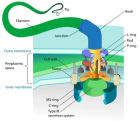
Figure 1
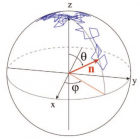
Figure 2
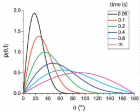
Figure 3

Figure 4

Figure 5

Figure 6

Figure 7

Figure 8

Figure 9
Similar Articles
-
Assessment and sensitive analysis of biological water risks in water resources with application of classical mass transfer computationsMohammad Gheibi*,Farhad Mahmoudi Jalali,Reza Aghlmand,Amir Takhtravan,Zahra Kian. Assessment and sensitive analysis of biological water risks in water resources with application of classical mass transfer computations. . 2021 doi: 10.29328/journal.abse.1001013; 5: 015-024
-
Enhancing functional expression of L-glycerophosphate oxidase in Escherichia coli by controlling the expression rateWenyu Zhang,Huanbo Tan,Yuanyuan Du,Yafeng Li,Wencheng Su,Michael Sattler,Peijian Zou*. Enhancing functional expression of L-glycerophosphate oxidase in Escherichia coli by controlling the expression rate. . 1899 doi: 10.29328/journal.abse.1001016; 6: 008-013
-
Enhancing functional expression of L-glycerophosphate oxidase in Escherichia coli by controlling the expression rateWenyu Zhang,Huanbo Tan,Yuanyuan Du,Yafeng Li,Wencheng Su,Michael Sattler,Peijian Zou*. Enhancing functional expression of L-glycerophosphate oxidase in Escherichia coli by controlling the expression rate. . 2022 doi: 10.29328/journal.abse.1001016; 6: 008-013
Recently Viewed
-
Metastatic Brain Melanoma: A Rare Case with Review of LiteratureNeha Singh,Gaurav Raj,Akshay Kumar,Deepak Kumar Singh,Shivansh Dixit,Kaustubh Gupta*. Metastatic Brain Melanoma: A Rare Case with Review of Literature. J Radiol Oncol. 2025: doi: 10.29328/journal.jro.1001080; 9: 050-053
-
Validation of Prognostic Scores for Attempted Vaginal Delivery in Scar UterusMouiman Soukaina*,Mourran Oumaima,Etber Amina,Zeraidi Najia,Slaoui Aziz,Baydada Aziz. Validation of Prognostic Scores for Attempted Vaginal Delivery in Scar Uterus. Clin J Obstet Gynecol. 2025: doi: 10.29328/journal.cjog.1001185; 8: 023-029
-
Scientific Analysis of Eucharistic Miracles: Importance of a Standardization in EvaluationKelly Kearse*,Frank Ligaj. Scientific Analysis of Eucharistic Miracles: Importance of a Standardization in Evaluation. J Forensic Sci Res. 2024: doi: 10.29328/journal.jfsr.1001068; 8: 078-088
-
A study of coagulation profile in patients with cancer in a tertiary care hospitalGaurav Khichariya,Manjula K*,Subhashish Das,Kalyani R. A study of coagulation profile in patients with cancer in a tertiary care hospital. J Hematol Clin Res. 2021: doi: 10.29328/journal.jhcr.1001015; 5: 001-003
-
Additional Gold Recovery from Tailing Waste By Ion Exchange ResinsAshrapov UT*, Malikov Sh R, Erdanov MN, Mirzaev BB. Additional Gold Recovery from Tailing Waste By Ion Exchange Resins. Int J Phys Res Appl. 2024: doi: 10.29328/journal.ijpra.1001098; 7: 132-138
Most Viewed
-
Evaluation of Biostimulants Based on Recovered Protein Hydrolysates from Animal By-products as Plant Growth EnhancersH Pérez-Aguilar*, M Lacruz-Asaro, F Arán-Ais. Evaluation of Biostimulants Based on Recovered Protein Hydrolysates from Animal By-products as Plant Growth Enhancers. J Plant Sci Phytopathol. 2023 doi: 10.29328/journal.jpsp.1001104; 7: 042-047
-
Sinonasal Myxoma Extending into the Orbit in a 4-Year Old: A Case PresentationJulian A Purrinos*, Ramzi Younis. Sinonasal Myxoma Extending into the Orbit in a 4-Year Old: A Case Presentation. Arch Case Rep. 2024 doi: 10.29328/journal.acr.1001099; 8: 075-077
-
Feasibility study of magnetic sensing for detecting single-neuron action potentialsDenis Tonini,Kai Wu,Renata Saha,Jian-Ping Wang*. Feasibility study of magnetic sensing for detecting single-neuron action potentials. Ann Biomed Sci Eng. 2022 doi: 10.29328/journal.abse.1001018; 6: 019-029
-
Pediatric Dysgerminoma: Unveiling a Rare Ovarian TumorFaten Limaiem*, Khalil Saffar, Ahmed Halouani. Pediatric Dysgerminoma: Unveiling a Rare Ovarian Tumor. Arch Case Rep. 2024 doi: 10.29328/journal.acr.1001087; 8: 010-013
-
Physical activity can change the physiological and psychological circumstances during COVID-19 pandemic: A narrative reviewKhashayar Maroufi*. Physical activity can change the physiological and psychological circumstances during COVID-19 pandemic: A narrative review. J Sports Med Ther. 2021 doi: 10.29328/journal.jsmt.1001051; 6: 001-007

HSPI: We're glad you're here. Please click "create a new Query" if you are a new visitor to our website and need further information from us.
If you are already a member of our network and need to keep track of any developments regarding a question you have already submitted, click "take me to my Query."






